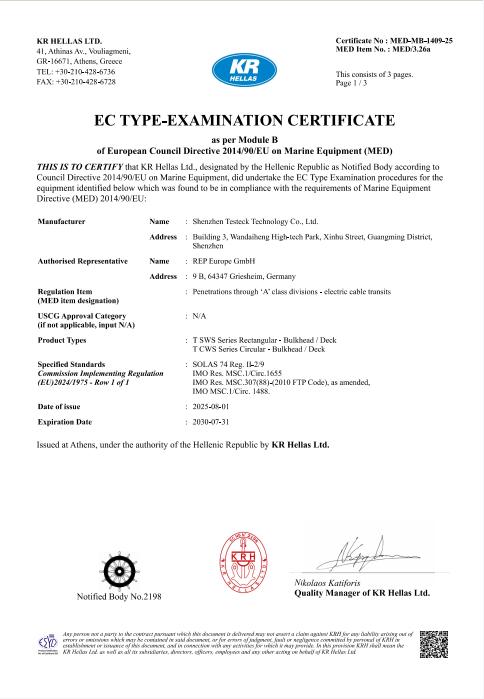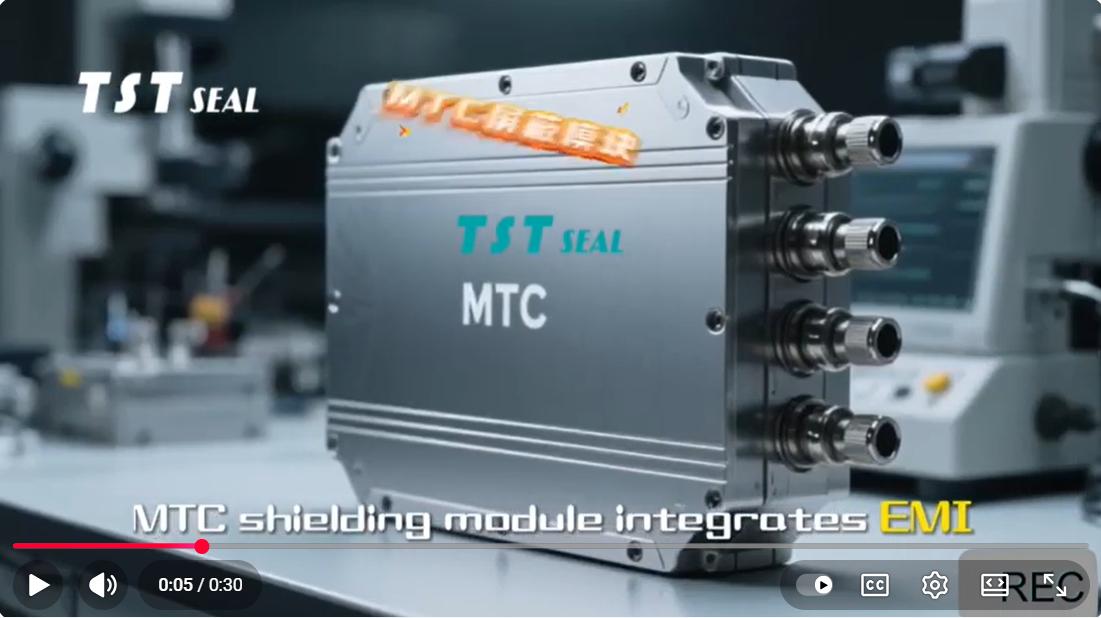
TST Seal :
- Fireproof
- Cable fixinAg
- Watertight
- Airtight
- Dustproof
- Noise reduction
- Vibration reduction
- Pressure resistance
- Corrosion resistance
- EMI/EMP
- Pest & rodent resistance
Related Articles
- circular seal (7)
- flange sealing (1)
- industrial sealing (2)
- MCT Transit Sealing System (2)
- rectangular seal (34)
- sealing modules (31)
- sealing solution (12)
TST SEAL MCT Electromagnetic Shielding Sealing Module Enables Military Ship Sonar to "Hear" Undersea Secrets
In the deep-sea battlefield, whoever detects the enemy first gains the upper hand. Modern warships and submarines’ “ears”—the sonar system—lock on targets by capturing extremely weak underwater sound waves. But you might not imagine that a sonar system worth hundreds of millions could be completely “deafened” by a “leaky cable.”
Why? Because the motors, radar, and communication equipment inside the ship constantly emit electromagnetic noise. If this invisible “electronic noise” enters the sonar room, it will act like “white noise,” drowning out the weak submarine signal, resulting in “inaccurate vision and hearing.” Even more seriously, electromagnetic interference can lead to misjudgments and even reveal one’s own position.
So what can be done? The answer is—the TST SEAL MCT electromagnetic shielding sealing module. It’s not an ordinary waterproof connector, but an “electromagnetic silencer” specifically designed for military sonar rooms, essentially a ship’s “silent earmuff.”
Why is sonar so “vulnerable” to interference?
How sensitive is a sonar system? It can hear the “heartbeat” of a submarine’s propeller tens of kilometers away. But this also means it is extremely sensitive to interference.
Microvolt-level signals: Underwater sound waves, after being converted into electrical signals, may only amount to a few microvolts (one millionth of a volt), ten thousand times weaker than a mobile phone signal.
Low-frequency interference is deadly: The 50-500Hz low-frequency electromagnetic noise generated by inverters and propulsion motors on ships falls precisely within the sonar’s operating frequency band, making it extremely prone to “co-frequency interference.”
Severe consequences: At best, the signal-to-noise ratio decreases, halving the detection range; at worst, the system gives false alarms, leading to incorrect decisions by the commander.
Traditional seals only prevent water and dust, but cannot prevent electromagnetic “ambush.” The TST SEAL MCT module was developed precisely to solve this critical problem.
The “core technology” of the TST SEAL MCT module: 360° electromagnetic shield. MCT = Multi-Contact Technology, is the core of high-end electromagnetic shielding connectors. Used for sonar room sealing, it achieves “full-link, no dead-angle” electromagnetic protection.
360° Metal Circular Crimping: Unlike ordinary “pigtail” grounding, the MCT module uses spring-loaded finger-shaped shielding clips or metal threaded rings, ensuring continuous 360-degree contact between the cable shielding layer and the metal casing, guaranteeing high-frequency shielding effectiveness >100dB, equivalent to attenuating interference to one ten-thousandth.
Double-Layer Shielding Design:
Inner Layer: The cable has its own copper mesh or aluminum foil shielding.
Outer Layer: The TST SEAL MCT connector body is made of high-strength aluminum alloy or stainless steel, forming a “Faraday cage” effect, completely isolating external electromagnetic fields.
IP68 Waterproof + Salt Spray Resistant: In the harsh marine environment, the TST SEAL MCT module uses corrosion-resistant metal + EPDM sealing rings, allowing for long-term reliable operation under deep-sea pressure and high salt spray conditions, with no shielding failure due to water ingress.
Vibration and Shock Resistance
Passing military-grade vibration tests (such as MIL-STD-810), the shielding connection remains robust even during high-speed maneuvers or explosive impacts.
Real-World Case Studies: From “Inaudible” to “Eyes Far Away”
A New Type of Frigate Sonar Upgrade Project
The ship’s original sonar system had unstable detection range. Investigation revealed poor cable shielding grounding, causing motor noise interference. Replacing it with a TST SEAL MCT shielded and sealed module improved the signal-to-noise ratio by 15dB and increased the detection range by over 30%, truly achieving “first detection.”
A Submarine Command Cabin Modification
Submarines have confined spaces and complex electromagnetic environments. All 200+ cable entry points in the sonar control cabinet were fitted with TST SEAL MCT threaded shielded connectors, along with fully shielded wiring in metal cable trays. After the modification, the sonar false alarm rate decreased by 90%, significantly improving the reliability of command and decision-making.
The Oceanographic Research Vessel “Deep Sea One”
Although not for military use, it has extremely high requirements for acoustic detection accuracy. Its multi-beam sonar system employs the TST SEAL MCT sealing solution, successfully creating high-precision topographic maps thousands of meters deep in the South China Sea, with data quality reaching internationally leading levels.
Industry Trends: From “Usable” to “Ultimate Silent Operation”
Higher Shielding Effectiveness: From >80dB to >120dB, addressing more complex electromagnetic warfare environments.
Integrated Design: The MCT module is integrated with fiber optics, power supply, and signal components, reducing penetration points and improving overall reliability.
Intelligent Monitoring: Embedded continuity sensors in the shielding layer monitor grounding status in real time, automatically triggering fault alarms.
Domestic Breakthrough: Previously reliant on imports, domestic manufacturers such as TST SEAL and TST cable have now launched military-grade MCT products, breaking through technological barriers.
On the unseen electromagnetic battlefield, victory often hinges on the smallest details. The TST SEAL MCT electromagnetic shielding module, though small, is a crucial piece of the puzzle for the sonar system to maximize its combat effectiveness. Its sophisticated metal structure and scientific grounding design create a “silent space” for ships, making their “ears” more sensitive and their “swords” more lethal.
In the future, with the development of unmanned underwater vehicles and underwater combat networks, the requirements for acoustic detection will only increase. “Invisible pioneers” like the MCT will continue to play an indispensable role as “silent guardians” in deep-sea warfare.
Free Sample | Customization Supported | Global Sales | Factory Direct Sales | Agents Welcome (Email:alixich@tstcables.com)







